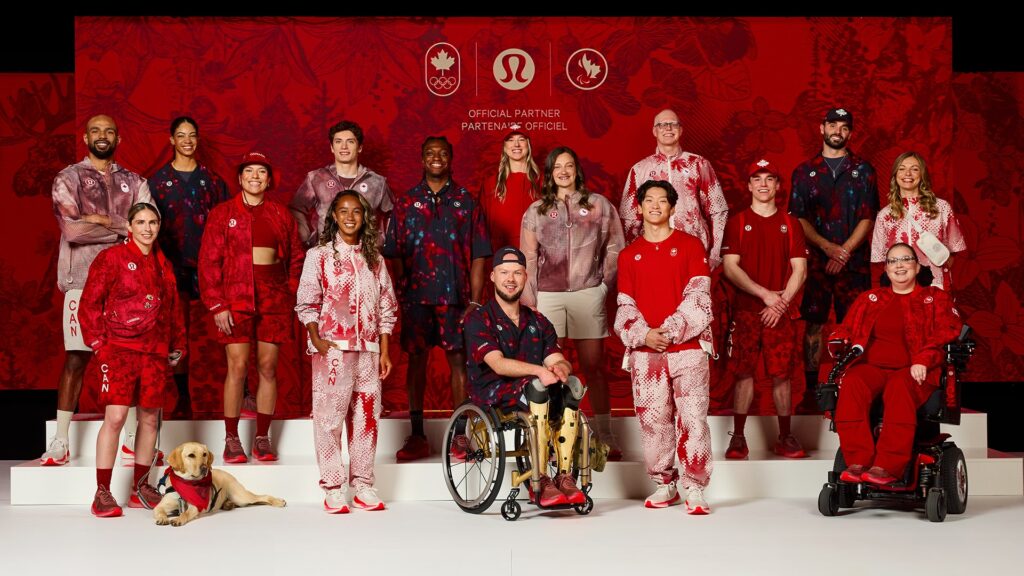Imitation is a form of recognition, says Lululemon exec as brand scales in China

Through innovation and localization to serve unmet needs, Lululemon has advanced from selling yoga pants to becoming a major brand in China and beyond.
In the winter of 2022, fate took an unexpected turn.
As Canada’s Olympic team entered the stage in signature maple red attire, a frenzy for their matching down jackets began. The buzz was like a butterfly flapping its wings, setting off a whirlwind around Lululemon.
At this point, Lululemon, known for its activewear and lifestyle apparel, had already gained traction across the Pacific, inspiring a wave of startups in China who looked to it as a benchmark for success. Yet within China, most people only knew Lululemon as “the Hermes of yoga pants.”
But almost overnight, the story shifted, and Lululemon embarked on its breakout journey in the Chinese market.
In 2023, Lululemon marked a milestone by surpassing 100 stores across mainland China. Its latest quarterly report showed a 34% year-on-year revenue increase in this market, and executives are predicting that mainland China will become Lululemon’s second largest market globally by fiscal 2026.
Today, Lululemon has transformed from a yoga pants seller into a full-range brand for men and women alike, with its reach extending from China’s largest cities to second- and third-tier markets.
This momentum has encouraged Lululemon to pour more resources into China. This year, for the first time, Lululemon joined the China International Import Expo (CIIE), with senior global executives like chief brand officer Nikki Neuburger in attendance—a sign of the brand’s commitment to this high-potential market.
Seizing this opportunity, 36Kr spoke with Lululemon’s top executives, including Neuburger, executive vice president of international Andre Maestrini, China managing director Huang Shanyan, and China vice president of brand marketing Xie Shuling, to discuss Lululemon’s community culture, strategic growth, and the competitive landscape.
The following interview has been edited and consolidated for brevity and clarity.

Meeting unmet needs
36Kr: How does Lululemon approach product innovation?
Nikki Neuburger (NN): At Lululemon, every innovation starts with addressing unmet needs—finding and filling gaps in the market. We do this by creating functional, innovative products with exclusive materials and a superior fit.
For example, many women’s shoes have traditionally been designed based on men’s foot shapes, though there are real differences between them. So, we redesigned our shoes from a “her-first” perspective. Our apparel for Canada’s Olympic team is another example—it was created with inclusivity and adaptability in mind. These reflect our ongoing commitment to addressing unmet needs.

36Kr: How is Lululemon tackling unmet needs in the Chinese market?
NN: We’ve developed an “Asia Fit” line, based on our global products to meet specific local needs. In China, we’ve factored unique preferences into our designs because consumer trends here often emerge more quickly than in other regions.
Our global design team was recently in China, conducting market research and observing retail trends and local consumer habits. Our innovation is rooted in a deep understanding of the market, which we feed back to our product teams to create tailored solutions.
36Kr: Could you share more about your localization strategy?
NN: Our limited-edition collections are a key example. Our team in China has developed Lunar New Year collections in recent years, which have been popular across our markets.
Andre Maestrini (AM): Each time we open a new store in a city, it’s often the customers’ first experience with Lululemon. We have local product educators who know our products well and can connect with customer needs. We also have over 200 brand ambassadors across China, helping to build strong community ties.
Defining Lululemon’s brand positioning
36Kr: How would you describe Lululemon’s brand positioning?
NN: Over the past year, we’ve invested significant time into our “feel-first” brand philosophy.
Feel-first embodies our commitment to creating community connections that foster well-being while providing products that enhance both performance and the overall sense of self. This philosophy has two layers: one focused on emotional well-being, the other on physical performance. Although feel-first is a new term, it’s been our strategy all along.
36Kr: What is at the heart of Lululemon’s community culture?
Huang Shanyan (HS): Our stores are at the core of Lululemon’s community. They’re more than retail spaces; they’re where we foster a sense of well-being across China. Our community includes customers, ambassadors, and partners, forming a network that starts at the individual level.
For us, physical engagement with customers is essential. We now have 138 stores across 41 cities in Mainland China, ensuring that our “Sweatlife” philosophy thrives.
36Kr: Lululemon pioneered the women’s yoga market. What’s the next breakthrough?
NN: We’re developing new products for women’s activewear bottoms, with an exciting collection set for early next year. These additions will continue the legacy of popular lines like “Align” and “Wunder Train.”
We’re also advancing in men’s training products, with a focus on enhancing performance. This might seem disruptive, but for us, it’s simply part of our innovation journey.
Next year, we’re releasing new footwear as well. While footwear is a newer category, we’re learning from customer feedback and refining our offerings with each iteration.
China to become Lululemon’s second largest market
36Kr: Why did Lululemon join the CIIE this year?
AM: This year is especially important. We’ve been in mainland China for over a decade, and last year, our revenue here approached USD 1 billion.
Looking forward, China is set to play an increasingly vital role in Lululemon’s global growth, making the expo an ideal moment to showcase our brand vision, innovative products, and our mission to enhance well-being.
36Kr: China’s market is evolving quickly, with fierce competition and cautious consumer spending. How does Lululemon attract and engage customers?
NN: Store expansion is a major focus. Each time we open a store in a new city, we invite locals to experience our products and activities. Experiencing Lululemon firsthand builds strong brand awareness.
We also leverage digital channels. Through WeChat, for instance, customers can learn about our brand, shop, and join community events. On Douyin, we’re connecting with Generation Z customers and reaching new audiences in smaller cities.
But beyond awareness, only outstanding products can draw customers in. We keep an eye on trends and innovate quickly, ensuring we stay in tune with shifting consumer needs and deliver tailored products to our Chinese audience.
Xie Shuling (XS): We’re seeing a shift in consumer values—they now seek a holistic experience. This aligns well with our focus on both product and activity experiences. They value not just fitness but balance and well-being. We’re well-positioned to meet this demand and aim to engage with more customers as we expand.
Recognition through imitation
36Kr: Many brands are mimicking Lululemon. How do you handle the competition?
NN: Staying true to our core is key. Sometimes imitation is a form of recognition, so there’s no need to be overly concerned. It pushes us to keep improving.
36Kr: What distinguishes Lululemon from other athletic brands?
NN: Our brand positioning sets us apart. Unlike traditional athletic brands that focus solely on physical performance, Lululemon emphasizes mental well-being and social connectedness, along with physical health.
We’re committed to developing exclusive fabrics and technologies that empower our customers to feel and perform at their best.
XS: Whether through our approach to fitness, connection, or community, we want our customers to feel like the best version of themselves. This is a core aspect of our brand.
#ActivewearInnovation #CommunityWellbeing #LululemonChina #FitnessLifestyle #MindBodyBalance #Ifvex
- Art
- Causes
- Crafts
- Dance
- Drinks
- Film
- Fitness
- Food
- เกมส์
- Gardening
- Health
- หน้าแรก
- Literature
- Music
- Networking
- อื่นๆ
- Party
- Religion
- Shopping
- Sports
- Theater
- Wellness


